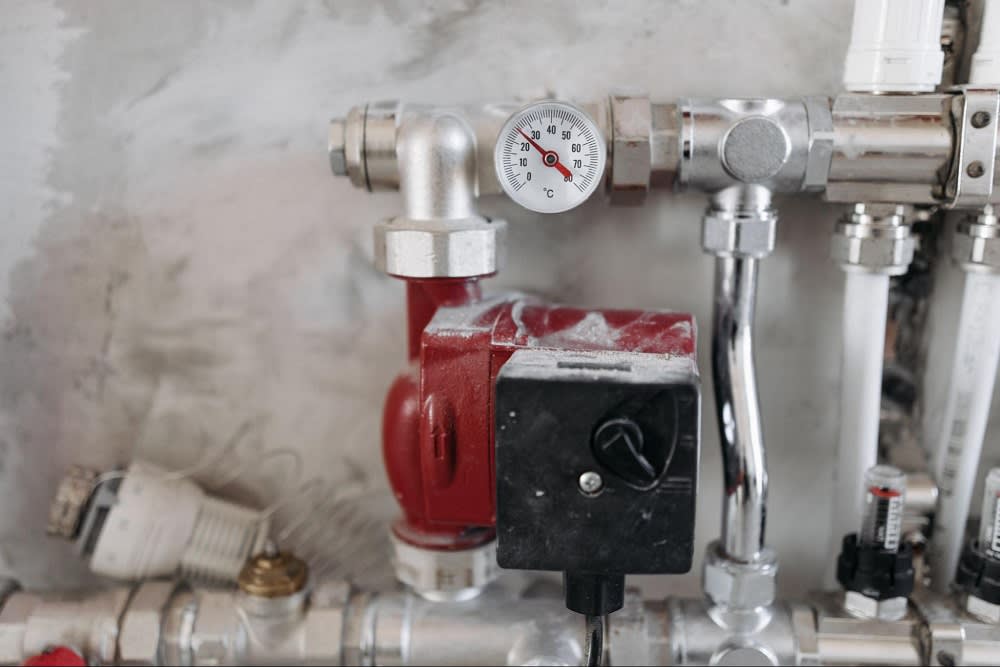Texas is known for its hot and humid temperatures and sunny skies. However, certain parts of the Lone Star State can get chilly from December through February.
If you’re new to Orange County, Texas, you’re probably wondering just how cold it gets and if you should winterize your home. This guide has all you need to know about preparing for the winter and protecting your home from cold temperatures.
What does it mean to winterize a home?
Before we get into whether or not you need to winterize your home, let’s define this process. Winterizing a property means getting it ready to withstand the cold winter months. This is done before any harsh conditions that may arise during the winter — typically in the fall — so that homes are ready for any extreme elements.
Does the weather in Orange County even get that cold?
Temperatures in Orange County, Texas, drop from December to February. On average, Orange County winter temperatures are around 64 degrees Fahrenheit for the highs and 47 degrees Fahrenheit for the lows. Although the area doesn’t receive an excessive amount of rainfall in the winter, moderate showers are still common which can lead to a freeze depending on the temperature.
To be on the safe side, it’s probably best to make the necessary adjustments to your Orange County home to get ready for winter. There have been bouts of snow and ice throughout the years in Texas which had devastating effects on homes. Take February 2021 for example, when an ice storm hit various parts of the state causing pipes to burst in people’s houses. By winterizing your property, you are preparing your home from harsh weather and protecting it from potential damage.
A complete guide to home winterization
Several different preventative measures can be taken to protect a property from water or freeze damage. From ensuring a home has the proper insulation to clearing the roof of debris, here are all of the ways you can prepare your property for winter.
Check for leaks in the building envelope
A building envelope is the outside layer of a property and includes doors, windows, the roof, flooring, insulation, and the foundation. Inspecting it for any leaks is a quick way to determine if warm air is making its way outside. It can be easiest to check for leaks on windier days but regardless, the key is to feel for drafts in areas where there are seams between building materials. Luckily, any openings found can be quickly covered up with tape or caulk.
Treat your plumbing system
The pipes inside a home can burst from extremely cold temperatures. If this happens, water will leak until it’s shut off. This is more troublesome if no one is home to stop the water leakage, as this continuous flow can lead to flooding, damage, and mold. Broken pipes are also notoriously expensive to fix.
To avoid this devastation altogether, all of a home’s exposed water pipes should be entirely insulated including those in attics, crawl spaces, and garages. Foam or fiberglass is usually a good material choice. The water supply for any outdoor pipes — such as sprinkler systems — should be shut off and drained too as exterior pipes are even more vulnerable to ruptures since cold temperatures can cause them to expand.
A property’s plumbing system often weaves through places that are colder than the rest of the house. Maintaining a consistently warm home temperature during the winter helps ensure pipes housed in unheated areas won’t freeze.
Ensure the home is properly insulated
It’s important to make sure that a home is properly insulated in the winter so heat is not lost. A major area to pay attention to is the attic. Since hot air rises, more warmth can be lost in the attic compared to other areas of the house. A good rule of thumb is to have attic insulation that is at least 12 inches thick.
Other parts of the property to consider insulating include the basement, air ducts in unconditioned areas, and crawl spaces. If you have cathedral ceilings, consider insulating them as well so the ceiling temperature stays as close to the desired room temperature as possible.
Verify your heating system works
Before temperatures start to drop too low in the winter, it’s best to double-check your home’s heating system is functioning. There are a few easy ways to verify this.
The first is testing the furnace by increasing the temperature on the thermostat. If the adjustment happens relatively quickly, then it’s working properly. If not, then it’s likely broken and will need to be fixed or replaced. Another tip is inspecting the air filter and cleaning it if it’s dirty. If your furnace runs on propane or oil, try to keep the tank full and keep backups on the property.
It should also be noted that additional warmth can be created inside a home without even touching the thermostat. Simply reverse the direction of your ceiling fans so the cool air rises and the warm air flows down. Fans are reversed when they are rotating clockwise.
Prepare your cooling unit for storage
Since there is no need for air conditioning during the winter, it’s best to store your AC unit during these months. It’s best to remove any window unit so the chilly air doesn’t cause damage and enter the home. Some properties also have outdoor units which need to be cleared of debris. The exterior AC can be covered with insulating material to prevent freezing or rusting as well.
Inspect your chimney and fireplace
Using a fireplace during the winter makes a living space warm and cozy. However, it’s important to prepare your fireplace and chimney for use to ensure it’s safe to use before lighting a fire.
First, look for any animals who may be nesting in the chimney, such as rodents who often hide in this space to escape the cold. Once it’s all clear, clean out any ashes that may have accumulated in the fireplace. Next, check if the damper opens and closes easily. All smoke should go straight up the chimney when the damper is open. If not, there is likely a blockage needing removal before the fireplace can be safely used. When you’re not using the fireplace, remember to always keep the damper closed as it can cause warm air to escape.
Clear the roof of debris
Cleaning your roof is crucial before temperatures start to drop. If there is debris in your gutters during the winter — such as pine needles or leaves — it can get wet and possibly freeze. This stops water from draining which can lead to damage or mold. In some instances, the water can make its way into the home too. The best way to clear your roof of debris is by hand or with a hose. Also, keep an eye out for any missing shingles needing replacement.
Protect your landscaping
If you want to protect your landscaping, you need to winterize your lawn and garden as well. Remove lawn weeds, clean up leaves, mulch your perennial beds, and water trees and shrubs adequately. If you have a fruit or vegetable garden, remove excess plant matter after you harvest your food. Don’t forget about your patio furniture and deck either. Get waterproof covers for your furniture, and consider an extra coat of sealer for your deck.
Winterizing each of these areas during the fall season ensures your Orange County property will make it through the cooler months without a hitch.
Amy Chance Real Estate
If you are looking to put down roots in Orange County, Texas, contact Amy Chance. Amy is one of the most sought-after and well-respected real estate agents in the state. Whether you’re interested in a condo, townhome, luxury home, or estate, Amy Chance will guide you through every step of your search.




